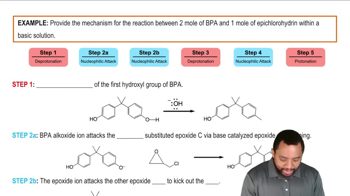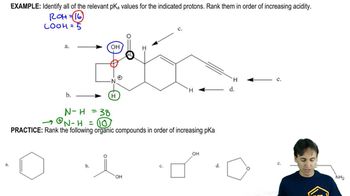For each molecule shown below,
1. indicate the most acidic hydrogens.
(a)
(b)
(c)

 Verified step by step guidance
Verified step by step guidance Verified video answer for a similar problem:
Verified video answer for a similar problem:



 2:26m
2:26mMaster Formation of Enolates with a bite sized video explanation from Johnny
Start learning